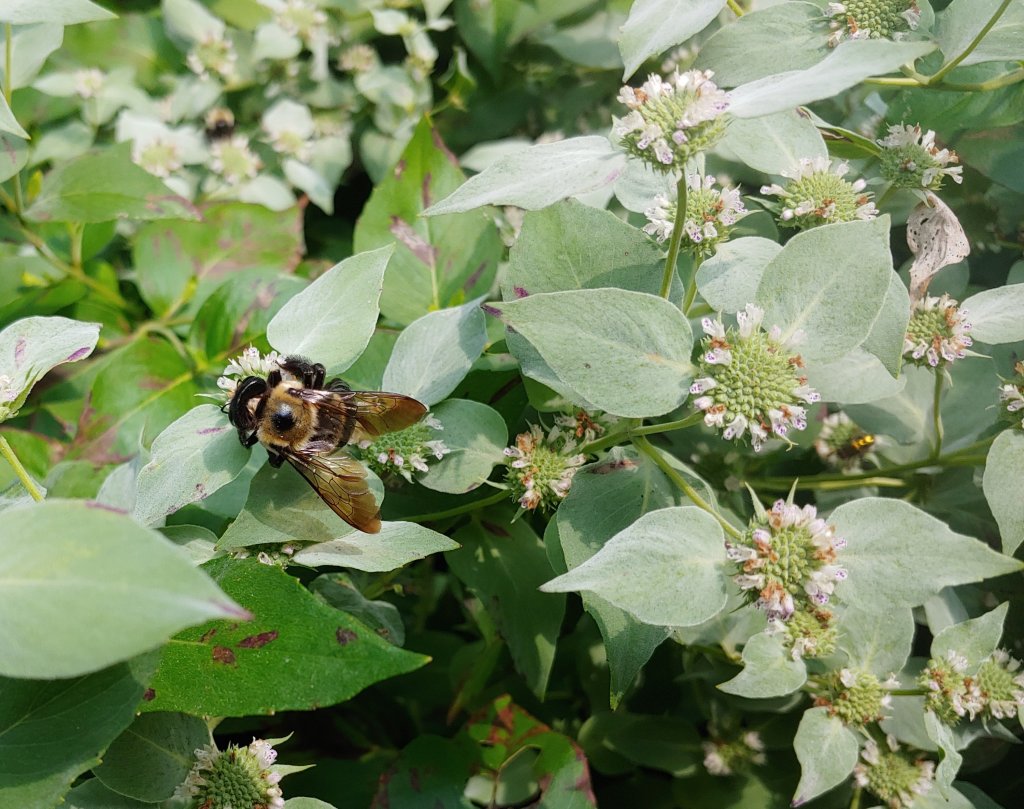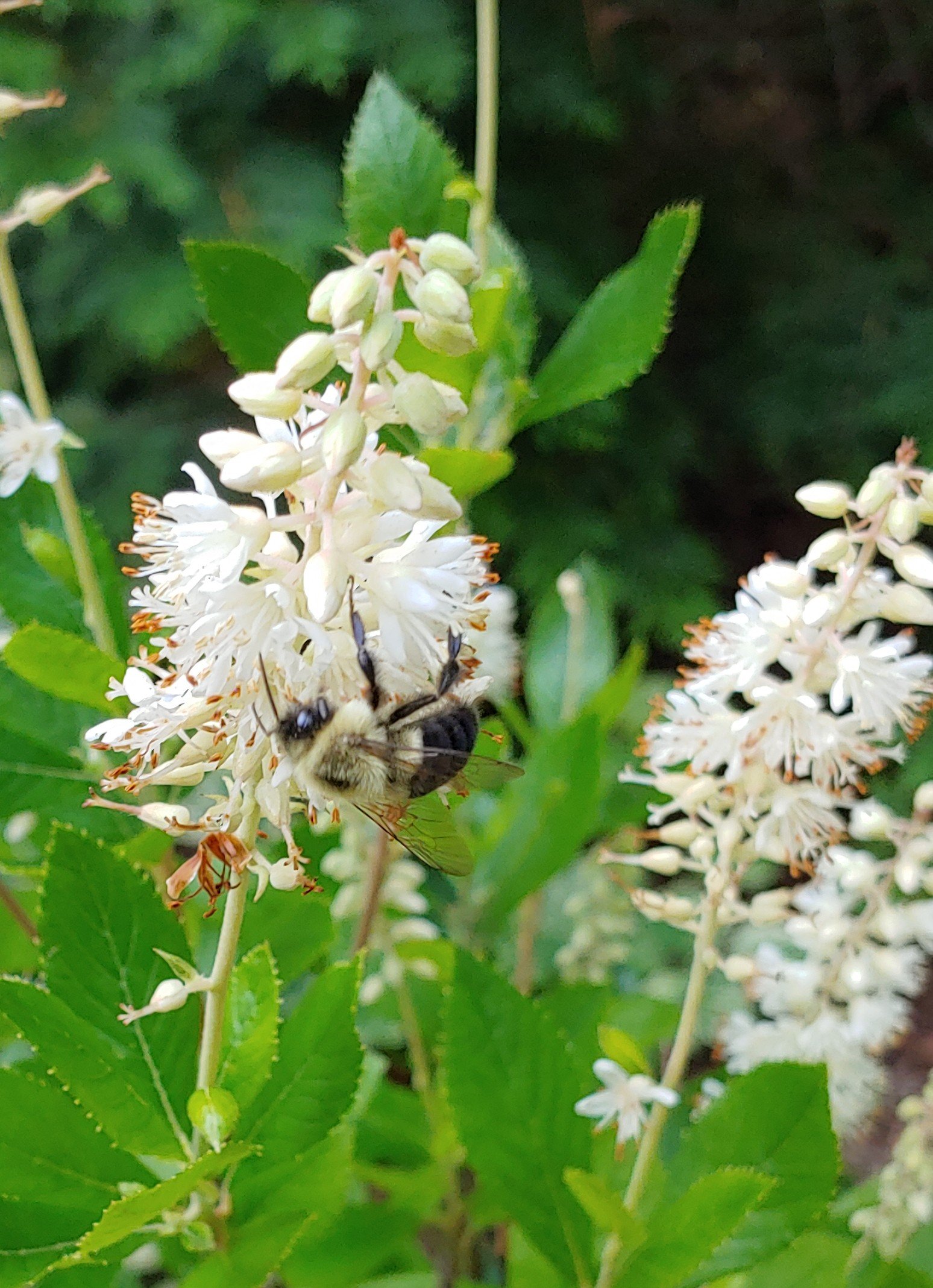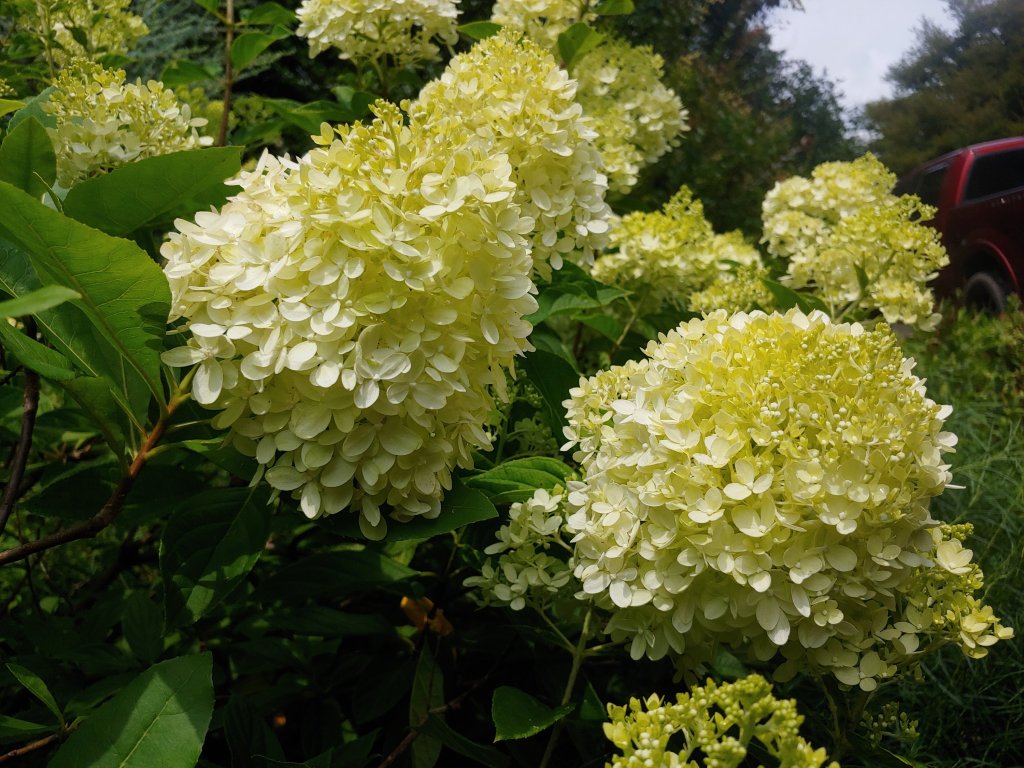Thankfully, recent thunderstorms have somewhat renewed the garden’s vigor, though the standard for the summer garden is low. There are numerous flowers and uncountable pollinators. Alone, the wide spreading patch of mountain mint (Pycnanthemum muticum, below) invites so many of a variety of bees that butterflies cautiously steer clear.


Swallowtails feast on the last of the blooms of bottlebrush buckeyes (Aesculus parviflora, above), and white and pink summersweets (Clethra alnifolia, below) that are just beginning to fade. Both buckeyes and summersweets thrive in sun and partial shade, and in damp and bone dry soils. These are not beautiful shrubs outside their short period of bloom, but that is not a requirement in this garden. In summer, pollinator friendly flowers are preferred.


Panicled hydrangeas (Hydrangea paniculata Little Lime, below) are at peak bloom, though several partially shaded seedlings will be a bit later. Seedlings growing in close proximity to neighboring shrubs must be pruned annually to control their vigorous growth, but these flower on the new spring growth so flowering is not diminished. The hydrangea are not pollinator favorites, but their large flowers are welcomed in the summer garden.

There are SO many buckeyes in North America. I happen to like the species that is native here because I am familiar with it, but would not recommend it for landscapes. It dies back through the warm middle of summer. To those who are unfamiliar with it, it seems to die! I see other species in mail order catalogs, and they are intriguing, but there are just to many to choose from, even if limited to species of North America.
I don’t expect that buckeyes or horse chestnuts will ever become popular, though they are easy trees and shrubs in our area. The red horse chestnut has problems with leaf spotting in summer, but buckeyes are very sturdy and adapted to sun or shade, damp or dry ground.
Red horse chestnut makes a good street tree here, and is not bothered by much, but is unpopular because it is unfamiliar. The native California buckeye is popular with landscape designers who follow fads, but really should not be so popular. No one really conserves water here anyway.
For shade trees to be popular in the east they must have good red fall color. This means Acer rubrums and more Acer rubrums to the exclusion of every other. Water is only a consideration for us in establishing a plant in its first year, Even then, nature takes care of most or all of the irrigation. We’re in a relatively dry period that would probably be record rainfall for you.
California is quite a mix. My former neighborhood got only about a food of rain annually. Just a few miles away, I got at least twice as much. Just a few miles farther, I get at least three times as much. Maples can grow here, but are unpopular. Some were actually good shade trees within the Santa Clara Valley. Red maples are some of the best, not because of their mediocre color (here), but because of their symmetrical form and relatively complaisant roots. I would not recommend the California buckeye as a street tree because it needs so much pruning for clearance above traffic, and produces so many of those obnoxious big seeds! Actually, I would not recommend it anyway, just because it is so . . . dead looking for so long. I like it here where no one else needs to see it. A few exemplary specimens live out in the public landscapes, and we maintain them, but also subordinate them to more desirable trees.
The mosquitoes and other biting insects have been so bad here with all the rains this summer that I can barely venture out into the garden, in spite of Mosquito Dunks and Deet. I’ve finally given in and bought a jacket and pants of fine mesh to keep them at bay. Those work (I watched an Asian tiger mosquito try to get to me in morning daylight without success), but I do feel a bit silly in them. And the humidity is still an issue even when I’m not getting bitten. In less than an hour, I’m drenched in sweat.
Several years ago my legs would be covered with tiger mosquitoes whenever I went outdoors. I was forced to apply a natural repellent that doesn’t kill anything, but the scent of wintergreen, garlic and whatever else encourages mosquitoes to go elsewhere. I still get a few between sprays, but my garden garb is shorts and sandals. The repellent seems to have no effect on bees or other insects, though I’ve noticed that for some reason Japanese beetles and aphids are scarce this summer.
I use that kind of spray as a “yardbomb” when it gets really bad and I need to be outside for an extended time — it has rosemary, spearmint, etc. I think it does help.